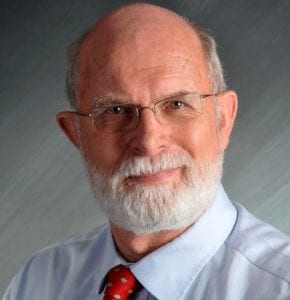Pictured: SAICE’s immediate past president, Dr Martin van Veelen
The South African Institution of Civil Engineering (SAICE) is perturbed to see that National Treasury has set up a task team which consists of financial services only “to find new ways to improve the funding and efficiencies of government’s ambitious fiscal and state-enterprise three-year R827bn infrastructure rollout”. According to Nicky Prins, director of capital projects at National Treasury, major cost over-runs were rooted in the planning stage – only 2% of project costs are spent on feasibility studies, “but if you get it wrong it affects the 98%”. This is the reason why SAICE proposes that the civil engineering industry should be involved right from the earliest planning stages as this industry will carry the responsibility, for the major part, of realising the objectives as set out in the National Development Plan (NDP). Civil engineering is at the heart of infrastructure creation and service delivery in South Africa. Statistics for the national government departments involved in planning ‘technical’ infrastructure projects show that there is a substantial/severe shortage of civil engineering professionals with the necessary knowledge, skill, competence, experience and wisdom to plan the development of infrastructure and to oversee the sustainable management of the country’s valuable infrastructure assets; in essence the implementation of the National Development Plan. SAICE’s immediate past president, Dr Martin van Veelen, points out that the biggest employer of engineering services in South Africa remains national, provincial and local government. It is the sector where most money is spent on service delivery in the form of the provision, operation and management of infrastructure. “With the billions now earmarked for infrastructure development, people with the necessary skills to understand the decision-making process of infrastructure development and spending and the responsibility associated with this, need to be deployed in all tiers of government. If the targets set out in the NDP are to be realised, these issues need to be addressed as a matter of urgency.” Dr Van Veelen explains that over the last number of years technocrats who had managed the central government departments and parastatals that are largely responsible for infrastructure development, namely the Departments of Water Affairs, Transport, Public Works, Provincial and Local Government, Housing and Energy, and parastatals such as Transnet, Eskom and Telkom among others, have been replaced by bureaucrats who do not always have the technical background or knowledge that is required.He elaborates, “Previously government departments, such as the Departments of Water Affairs, Transport and Public Works, were managed by technocrats who, through their long involvement in the business of creating and maintaining infrastructure, had acquired the wisdom to plan ahead and make decisions. These technocrats have been replaced by a management corps who did not rise through the ranks, or who did so very quickly and therefore have not necessarily acquired the wisdom needed to make long-term decisions of this nature. In the Department of Water Affairs, where bulk water infrastructure planning occurs, only seven out of a senior management structure of 48 people are engineers.”
“Between the three engineering infrastructure management departments of government (Water Affairs, Transport and Public Works) there are 89 engineers, who represent 1.6% of the civil engineers in South Africa. Of these, 81 are within the Department of Water Affairs, while the Department of Transport has only two. It should, however, be acknowledged that the South African National Roads Agency Ltd (SANRAL), which is responsible for the national road network, has 31 engineers.” Even taking into account other parastatals such as Transnet, Portnet and ACSA, responsible for other aspects of the transportation infrastructure, the number of engineers in government employ is alarmingly small. Dr Van Veeleen asserts, ”Achieving the goals of the NDP relies heavily on the creation of infrastructure to support and stimulate economic growth. Planning for infrastructure development requires a capable government, which in turn implies experienced and knowledgeable engineering professionals who can plan how this infrastructure development should unfold, given the limited resources that are available.” He furthermore states, “South Africa is blessed with a highly competent and experienced corps of engineering practitioners. It is one of the few countries on the African continent that does not need consultants from Europe or other countries to solve the challenges of a developing country. However, the centre of gravity of the accumulated wisdom lies in an ageing, predominantly white and male group of professionals. This is certainly not politically correct, but it is a fact. The country cannot afford to disregard this boon if the objectives of the NDP are to be achieved.” This view is supported by Peter Kleynhans, current president of SAICE, when he says, “Engineering skills have not been and are not being adequately viewed as a national asset. Engineering practitioners are developed at great expense over a lengthy period, generally at least three decades. Due to historical attitudes these assets are then ‘retired’ before many of them have completed their useful lives. Coupled with this is increasing life-expectancy, which results in engineering practitioners being ‘fit for purpose’ for much longer than in the past. Retirement is becoming an antiquated concept and we need to adjust our attitudes, as well as the utilisation of ‘engineering practitioner assets’, accordingly.” Manglin Pillay, CEO of SAICE, emphasises that SAICE and its approximately 10 000 members are willing and able to assist National Treasury if given the opportunity.







